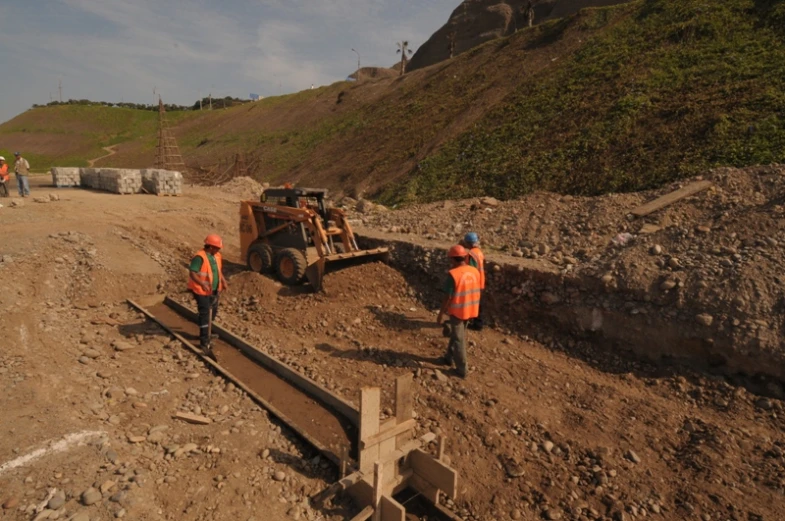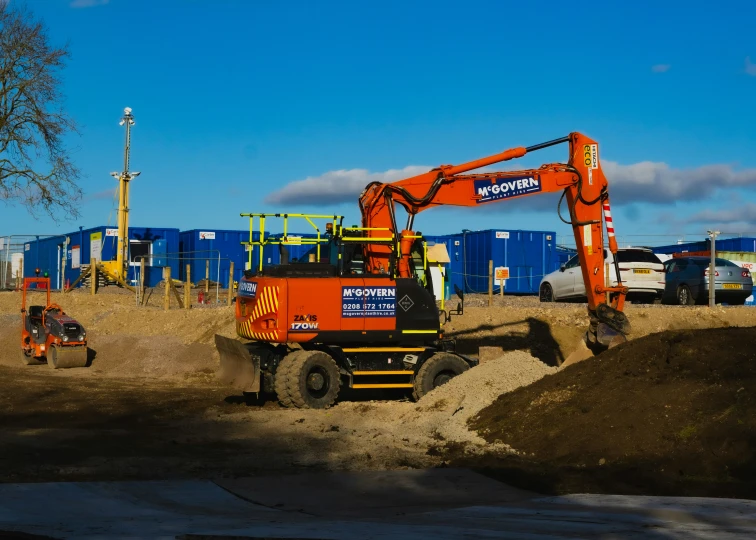Introduction
In my view, the excavation industry plays a crucial role in construction and infrastructure. Whether it’s residential building, road laying, or installing underground utilities, excavation services are indispensable. I hope to share the detailed steps and practical advice I gathered while starting my excavation business, helping you smoothly enter this opportunity-filled industry.
1. Research the Excavation Industry
1.1 Market Analysis
Before starting any business, I understand the importance of market research. I took the time to study current trends in the excavation industry, such as sustainable construction and the application of new technologies. I also analyzed the demand for excavation services in my area to identify any unmet market needs.
1.2 Competitor Analysis
I identified and analyzed local competitors to understand their service offerings and pricing strategies. This helped me devise my own pricing and service strategies to stand out in the market.
2. Develop a Business Plan
2.1 Executive Summary
My business plan includes business goals and vision. I clarified the long-term objectives I hope to achieve through my excavation business, such as market share and customer satisfaction.
2.2 Services Offered
Based on market demand, I determined the types of excavation services to offer, such as residential excavation, commercial excavation, and land grading, ensuring a diversified service portfolio to meet client needs.
2.3 Financial Projections
I detailed the startup costs, including equipment purchase, employee salaries, and legal fees. I also created revenue forecasts to assess the business’s feasibility and profitability.
3. Legal Requirements
3.1 Business Structure
I chose the appropriate business structure, such as a Limited Liability Company (LLC), which impacts my tax obligations and legal responsibilities.
3.2 Licenses and Permits
I applied for the necessary excavation licenses and permits according to local regulations, ensuring my business complies with all legal requirements to avoid potential issues.

4. Procure Equipment and Supplies
Purchasing the right equipment and supplies is key to starting an excavation business. Here’s my detailed experience and advice in this area.
4.1 Essential Equipment
Before starting my excavation business, I carefully listed the equipment I needed. Here are some essential pieces:
- Excavators: A multifunctional piece of equipment suitable for various excavation tasks. I chose a model appropriate for my business size to ensure flexibility in both urban and rural settings.
- Bulldozers: I needed bulldozers for land leveling and moving large amounts of soil, ideal for large-scale construction projects.
- Loaders: This equipment can quickly load and unload materials, increasing work efficiency and is an indispensable part of my operation.
- Transport Vehicles: Reliable transport vehicles are essential for moving equipment and materials. I selected trucks suitable for my needs to ensure timely transportation.
I also considered other auxiliary equipment, such as compactors and drills, depending on specific project requirements.
4.2 Buying Used Equipment to Reduce Costs
To save costs, I considered purchasing used equipment. Here are the steps and experiences I took in this process:
- Assessing Equipment Condition: Before buying used equipment, I requested detailed maintenance records and condition reports from the seller. I personally inspected the equipment to ensure there was no obvious wear or damage.
- Price Comparison: By comparing prices from different sellers, I found the best options within my budget. This allowed me to acquire quality equipment without overspending.
- Warranties and Service: The used equipment sellers I chose typically offered a warranty period, providing additional assurance. I made sure to inquire about warranty terms at the time of purchase to mitigate risks.
4.3 Finding Used Equipment on Rexcavators
Rexcavators is an excellent platform I discovered for seeking used excavation equipment. Here’s how I approached this:
- Browsing Equipment Listings: I browsed numerous used equipment listings on the Rexcavators website, filtering by models and price ranges that suited my needs.
- Contacting Sellers: For equipment I was interested in, I proactively contacted sellers to inquire about detailed information and history. This provided insights into the equipment’s usage and maintenance.
- On-Site Inspection: Before making a purchase, I typically arranged on-site inspections to personally check the equipment’s operational status. This is crucial, as firsthand checks help avoid potential issues.
4.4 Procurement of Supplies
In addition to major equipment, I needed to procure a range of supplies to support daily operations:
- Safety Equipment: Including hard hats, goggles, and protective clothing. These are essential for ensuring the safety of my team on the job.
- Tools and Accessories: Such as shovels, hammers, and measuring tools—these small items are also indispensable in daily work.
- Maintenance Materials: I needed basic maintenance materials like lubricants and cleaning agents to keep the equipment running smoothly.
4.5 Building Supplier Relationships
In the process of procuring equipment and supplies, I realized the importance of establishing good supplier relationships. This not only ensures timely access to needed materials but also provides price and service advantages. I worked to maintain good connections with local suppliers, forming mutually beneficial partnerships for future projects.
By following these steps, I successfully navigated equipment procurement, laying a solid foundation for my excavation business. Proper equipment selection and supply chain management are crucial for ensuring smooth business operations.
5. Develop Marketing Strategies
5.1 Brand Building
I worked hard to create a strong brand image, ensuring my brand leaves a lasting impression on clients. I designed professional logos and promotional materials to enhance brand visibility.
5.2 Online Presence
I established an SEO-optimized website showcasing my services, project examples, and client testimonials. Additionally, I utilized social media platforms to engage with potential customers and enhance brand exposure.
5.3 Networking and Partnerships
I built strong relationships with local contractors and suppliers, forming strategic partnerships. This helped me gain more project opportunities and resource support.
6. Hiring and Training Employees
6.1 Staffing Needs
Based on the scale of my business and service types, I identified the number of employees needed, including operators, technicians, and management staff.
6.2 Training Programs
I provided safety training and relevant skills training for employees, ensuring they possess the necessary qualifications and knowledge to improve efficiency and safety.

7. Insurance and Risk Management
7.1 Types of Insurance
I purchased appropriate insurance for my business, including general liability and workers’ compensation insurance, to protect myself and my employees from potential risks.
7.2 Risk Mitigation Strategies
I developed safety protocols and equipment maintenance plans to minimize the risks of accidents and equipment failures.
Conclusion
Starting an excavation business requires thorough preparation and careful planning. Through in-depth market research, a sound business plan, and effective marketing strategies, I successfully entered this opportunity-filled industry. I encourage every entrepreneur to take the bold step to pursue their business goals!
Call to Action
Feel free to share your experiences or ask questions. If you have any inquiries or need further consultation, don’t hesitate to contact me.


